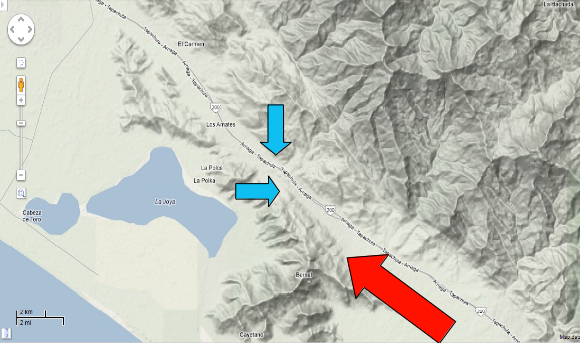The Narrow Neck of Land and the Narrow Pass
The Narrow Neck of Land and the Narrow Pass
Where they really are and what it really means
By David G. Hennessey
With so many scholars over the years trying to place Book of Mormon sites and not being able to, we wonder if we are looking at things correctly. The reality is that if we can place one or two primary landmarks then we may be able to reconstruct the major parts of the geography for the book.
Most scholars place Book of Mormon sites in southern Mexico and Central America (Mesoamerica) and the narrow neck as the Isthmus of Tehuantepec and the narrow pass somewhere in that narrow neck. The pertinent scripture is Alma 50:34.
| And it came to pass that they did not head them until they had come to the borders of the land Desolation; and there they did head them, by the narrow pass which led by the sea into the land northward, yea, by the sea, on the west and on the east. |
This scripture makes it clear that the narrow neck does not cut across the land like most scholars have traditionally thought, but rather runs along a seashore as it literally says. I believe that the scripture (Alma 22:32) stating that a Nephite could go from the West Sea to the East is talking about walking from the West Sea across some lowlands, then climbing mountains and coming to the top there of, and once you are descending down into the valley on the opposite side of the mountain from the sea, you are in the East. You go from the west sea up and over to the east, not the east sea, which it never says.
 Narrow neck of land, by the sea shore, running northward. The narrow pass is at the top
Narrow neck of land, by the sea shore, running northward. The narrow pass is at the top
of this narrow neck.
Alma 50:34 - And it came to pass that they did not head them until they had come to the borders of the land Desolation; and there they did head them, by the narrow pass which led by the sea into the land northward, yea, by the sea, on the west and on the east.
The direction is northward, therefore not true north. Looking at the map above, we can see that they were traveling northward, but not true north. In the opposite the travel down is southward, not south. Again, correct in its direction.
Some have suggested that the phrase should be punctuated . . . by the narrow pass which led by the sea into the land, northward . . . northward being their travel direction rather than Land Northward being the name of a geographical location. I don't think that is correct because Mormon, in the same chapter, talks about two geographical places: Land Desolation (also referred to as Land Northward) and Land Bountiful. Remember, there were no punctuation marks in the original manuscript.
What about the sea on the east and on the west? Does it really say that? What if the meaning is read thus: And it came to pass that they did not head them until they had come to the borders of the land Desolation; and there they did head them, by the narrow pass which led by the sea into the land northward, on the west and on the east? If we read it this way then the meaning is clear. The topic or subject is that they headed them. The subject is not the pass nor the sea. So they headed them at the pass, on the left and on the right (or east and west). And this "heading" of them was by the sea, where the narrow strip of land and the narrow neck were located.

The long narrow strip of land with a narrow pass at one end. It runs by the seashore and is easily traversed by a large body of men, women and children. The narrow neck would be a great place to stop them.
Here we can see that it would be very easy to place part of an army on the west and part on the east of the pass and stop another army from passing through. It would be relatively easy to defend because of being on higher ground. Again, these armies are meeting at a narrow pass, at one end of a long narrow strip of land that runs by the seashore. It is the fastest way for any large group of people to move and it's also the easiest place to stop them.
F. Richard Hauck was one of the first to propose something very similar to this in his book Deciphering the Geography of the Book of Mormon, Deseret Book Co (January 1988).* On page 12 he says:
"One of the traditional assumptions of Book of Mormon scholars and casual readers has been to equate the 'narrow neck of land' with an isthmus... it has complicated and confused the numerous attempts made to identify the setting of the book, for the identification of the proper isthmus is frequently the primary focus of attempts made to identify the Book of Mormon geography... The west sea is clearly evident in the descriptions given in the text, but the east sea is never specifically mentioned as being associated with the narrow corridor." (Pg. 12)
* Deciphering the Geography of the Book of Mormon is available on Amazon.com or you may contact the author at (f.richard.hauck@gmail.com) or Joe Andersen (joeandersen38@gmail.com).


